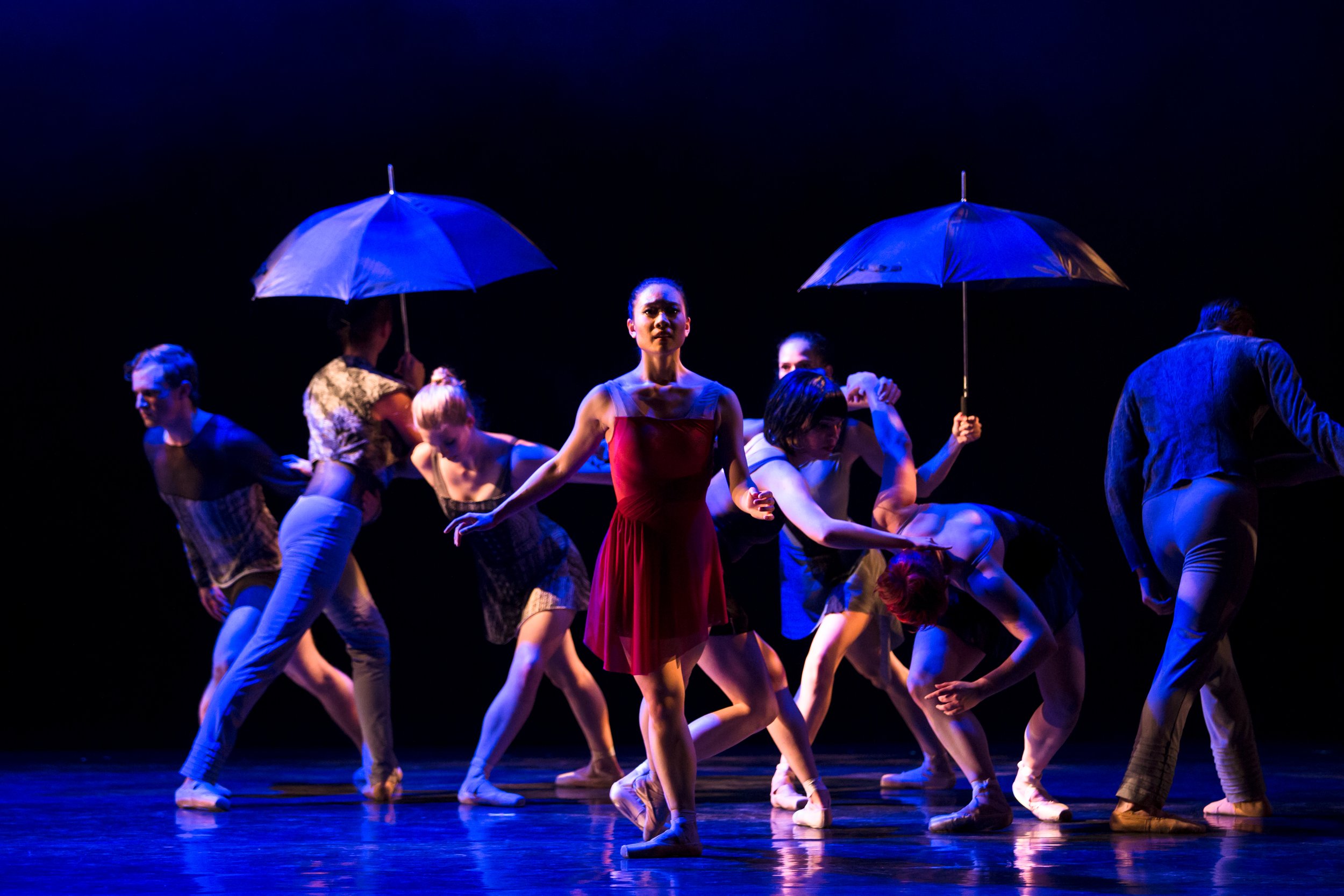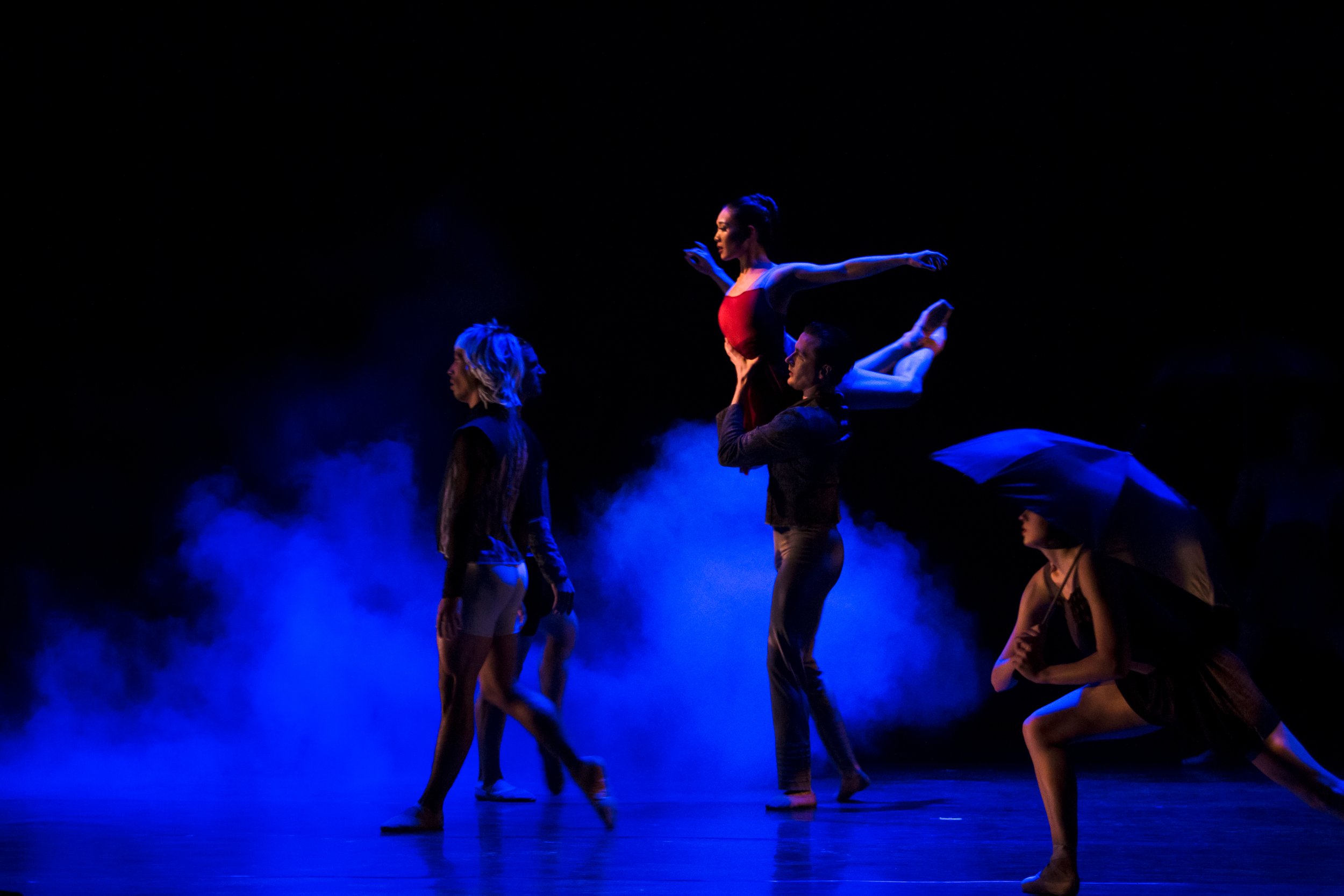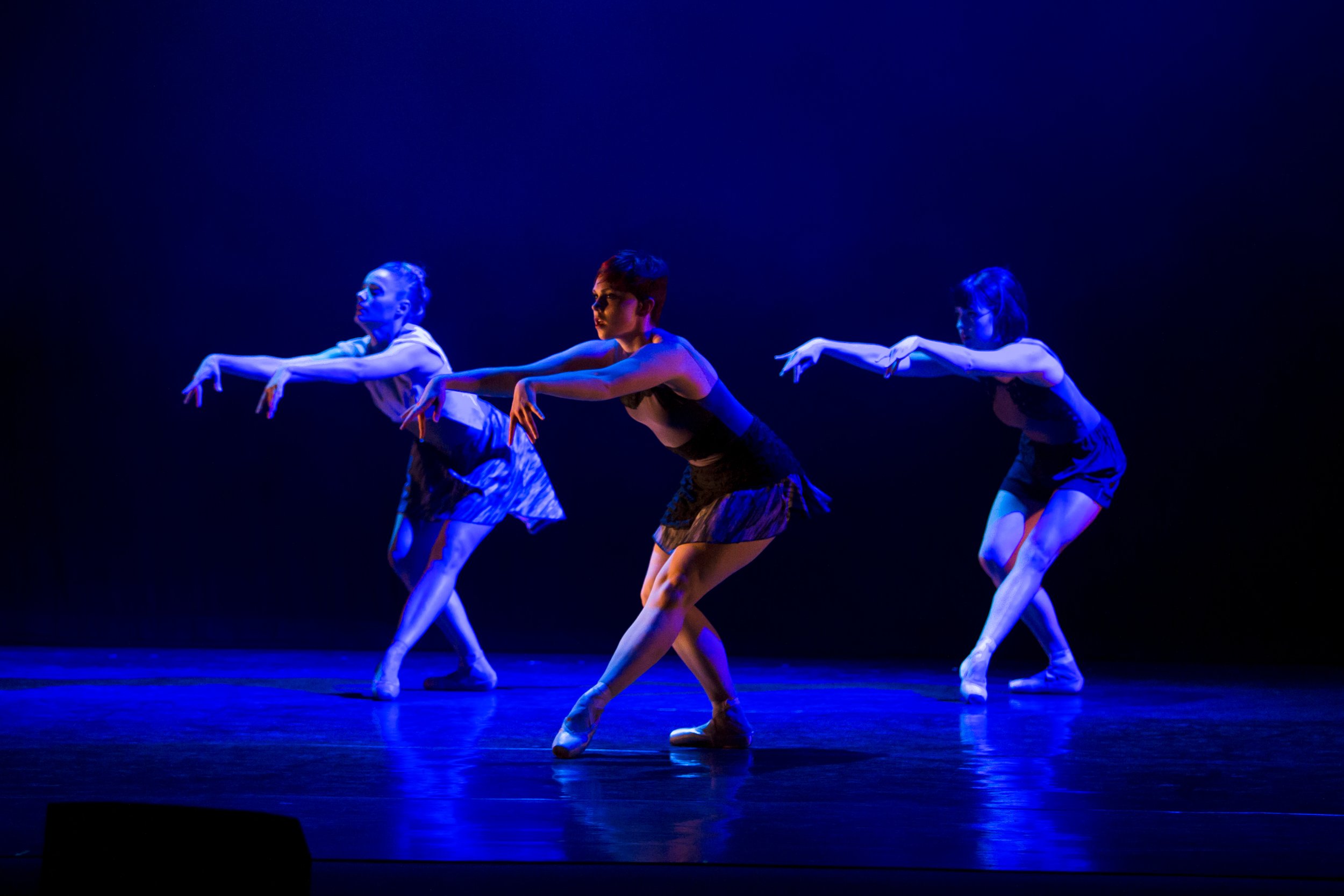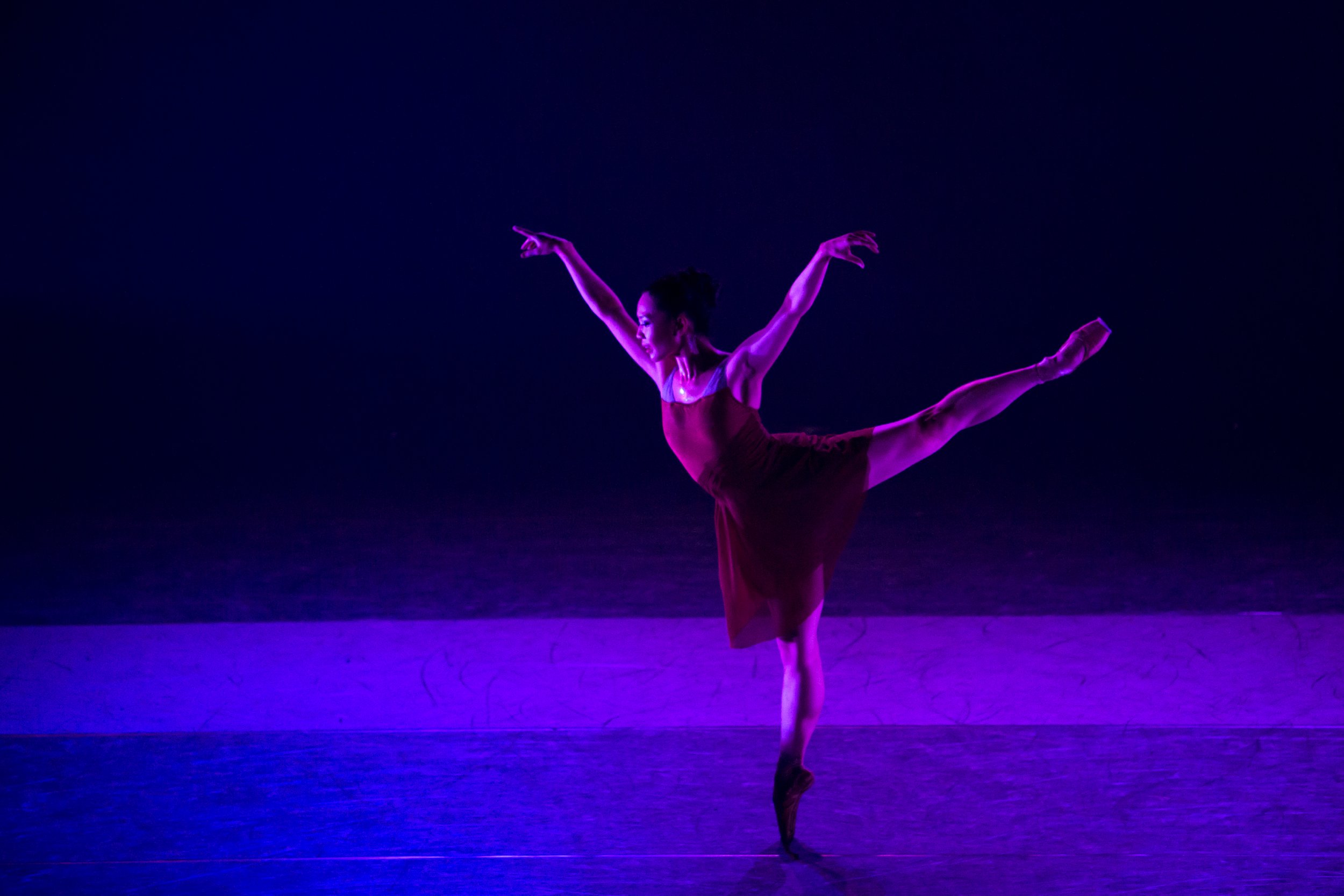
The gates of hell are locked from the inside.
"The Space in Between" by Julianna Rubio Slager draws inspiration from C.S. Lewis’s The Great Divorce, bringing to life a journey of souls caught between heaven and hell, grappling with choices that will determine their eternal fate. Slager’s ballet follows a cast of characters as they confront their inner struggles, fears, and desires in a surreal landscape between worlds, a liminal "space in between." Through her choreography, Slager explores the delicate, haunting question posed by Lewis: “There are only two kinds of people in the end: those who say to God, ‘Thy will be done,’ and those to whom God says, ‘Thy will be done.’”
Each character faces a unique battle with pride, fear, self-delusion, or regret, embodying the struggle to let go of earthly attachments that keep them from accepting divine grace. As in The Great Divorce, Slager’s choreography shows these souls in tension between light and shadow, hope and despair. Some movements are airy and expansive, symbolizing the pull of transcendence, while others are tight and resistant, expressing the weight of self-imposed barriers. A poignant motif in the piece, recurring through gentle, upward-reaching gestures, reflects Lewis’s idea that “the blessed will say, ‘We have never lived anywhere except in Heaven,’” suggesting the potential for transformation that lies within each choice. The ballet invites audiences to journey with these souls, to confront their own attachments and, as Lewis writes, to consider “whether we choose joy or choose nothing.”




